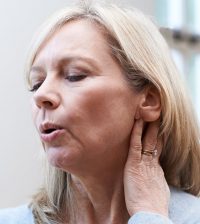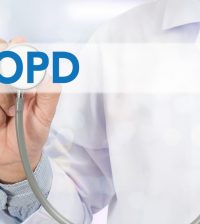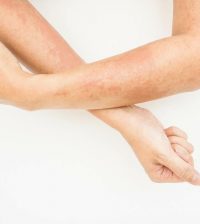- Bird Flu Virus in Canadian Teen Shows Mutations That Could Help It Spread Among Humans
- Flu, COVID Vaccination Rates Remain Low as Winter Nears
- ’10 Americas:’ Health Disparities Mean Life Expectancy Varies Across U.S.
- Short-Term Hormone Therapy for Menopause Won’t Harm Women’s Brains
- Could a Vitamin Be Effective Treatment for COPD?
- Woman Receives World’s First Robotic Double-Lung Transplant
- Flavored Vapes Behind Big Surge in U.S. E-Cigarette Sales
- Reading Beyond Headline Rare For Most on Social Media, Study Finds
- Meds Like Ozempic Are Causing Folks to Waste More Food
- Fibroids, Endometriosis Linked to Shorter Life Spans
New Insights Into Why Alzheimer’s Can Bring Drowsiness

Alzheimer’s patients are often drowsy during the day, but it might not be because of poor sleep at night.
Instead, a clinical trial that monitored patients’ sleep and then studied their brains after death discovered an entirely different reason for such sleepiness — they suffer a loss of neurons that help keep a person awake.
“You can think of this system as a switch with wake-promoting neurons and sleep-promoting neurons, each tied to neurons controlling circadian rhythms,” said study co-lead author Joseph Oh, a medical student at the University of California, San Francisco.
“Finally, with this post-mortem tissue, we’ve been able to confirm that this switch, which is known to exist in model animals, also exists in humans and governs our sleep and awake cycles,” Oh said in university news release.
The researchers studied both Alzheimer’s patients and those with a neurodegenerative condition known as progressive supranuclear palsy (PSP) who have trouble sleeping.
The study included 33 patients with Alzheimer’s, 20 with PSP, and 32 volunteers who had healthy brains through the end of life.
The individuals were patients at the UC San Francisco Memory and Aging Center who had their sleep monitored with an electroencephalogram and donated their brains after they died. The study having access to patients both during their lives and after their deaths helped provide some long-unknown answers.
“We were able to prove what our previous research had been pointing to — that in Alzheimer’s patients who need to nap all the time, the disease has damaged the neurons that keep them awake,” said Dr. Lea Grinberg, a neuropathologist who, along with psychiatrist Dr. Thomas Neylan, is a senior author on the study.
“It’s not that these patients are tired during the day because they didn’t sleep at night,” Grinberg noted in the release. “It’s that the system in their brain that would keep them awake is gone.”
In the PSP patients, neurons that make them feel tired are damaged, so they are unable to sleep.
The research team measured the two proteins associated with the neurodegenerative process, beta amyloid and tau, during the study. Though most past research has suggested beta amyloid accumulation is responsible, this team found the opposite. The PSP patients did not have a large amount of accumulated beta amyloid protein in their brains.
“But it turns out that they have none,” Neylan said. “These findings confirm with direct evidence that tau is a critical driver of sleep disturbances.”
“We see that these patients can’t sleep because there is nothing telling the “awake” neurons to shut down,” Grinberg said. “Now, rather than trying to induce these people to sleep, the idea is to shut down the system that’s keeping them awake.”
An ongoing clinical trial of patients with PSP is using a treatment to target that overactive awake system, rather than a traditional trial-and-error sleep medication treatment.
Study co-lead author Christine Walsh, an assistant professor of neurology, said that PSP and Alzheimer’s are at opposite ends of the sleep-disturbance spectrum and she expects the research will lead to new treatments for sleep disturbance driven by neurodegeneration.
Treatments for Alzheimer’s could be adjusted depending on the patient’s needs, bumping up the “awake” system while tamping down the “sleep” system, Walsh said.
“We’re even more hopeful that we can actually make a difference in the lives of these patients,” Walsh said.
The study was published April 4 in JAMA Neurology.
More information
The U.S. National Institute of Neurological Disorders and Stroke has more on progressive supranuclear palsy.
SOURCE: University of California, San Francisco, news release, April 4, 2022
Source: HealthDay
Copyright © 2024 HealthDay. All rights reserved.



-120x134.jpg)




